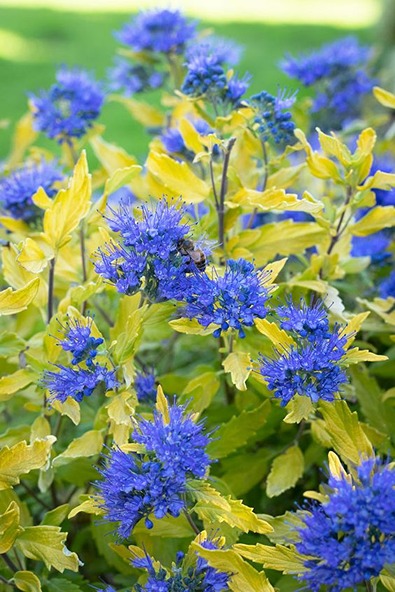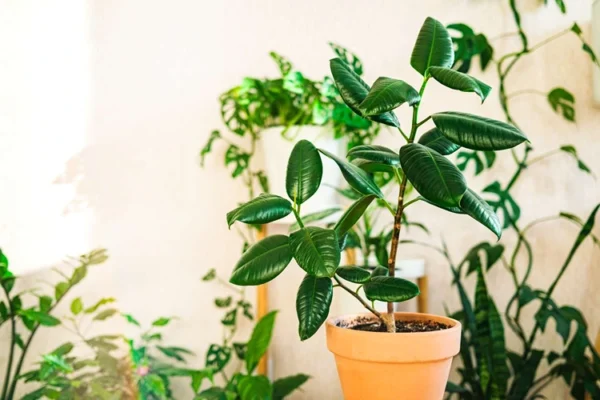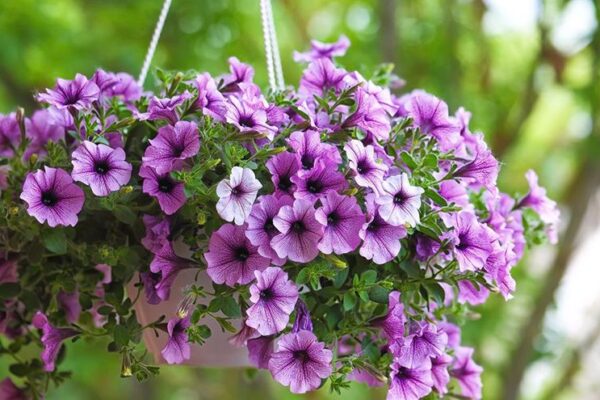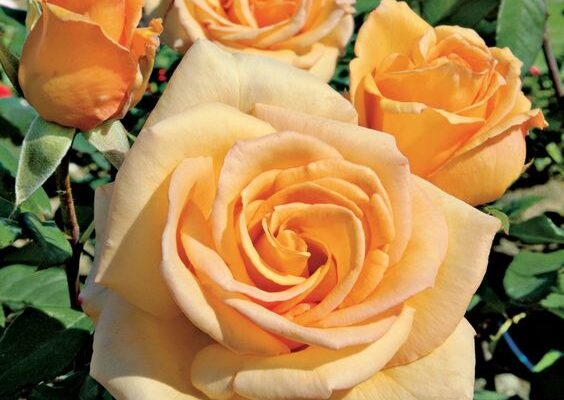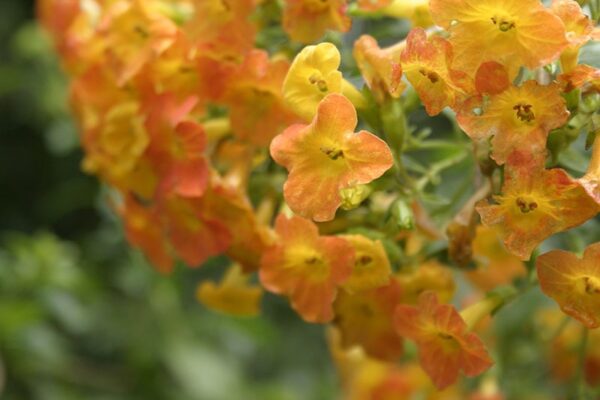15 Brilliant Blue Flowers for Your Garden
Finding plants that display true blue blooms can be a daunting task for gardeners. While numerous plants are marketed as having blue flowers, in reality, their blooms often tend to lean towards shades of lavender or purple, rather than a pure blue hue. Moreover, the perception of color can be influenced by sunlight, leading to variations between the blooms depicted in seed catalogs and those observed in your own garden. However, despite the challenges, there are indeed blue flowers available for those who are determined to add this elusive color to their garden.
1: Cornflower (Centaurea cyanus)
This is one of the most artistic and beautiful blue flowers. Centaurea cyanus, commonly known as cornflowers or bachelor’s buttons, exudes a captivating charm as a wildflower. Its name “cornflower” originated from its natural occurrence in European cornfields, while “bachelor’s button” was inspired by the tradition of bachelors adorning the flower in their lapels during courtship. The plant boasts an abundance of ruffled disk-like flowers, resembling thistles in appearance but without the prickly thorns. As an annual, Centaurea cyanus has the remarkable ability to self-sow, ensuring its presence in the garden year after year. On the other hand, the mountain bluet (Centaurea montana) is categorized as a perennial cornflower, offering enduring beauty and longevity to any landscape.
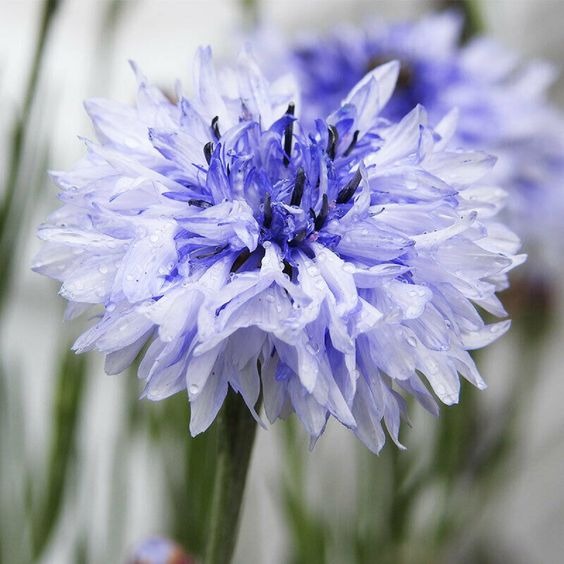
2: Poppy Anemone
This is one of the most attractive blue flowers. The poppy anemone, also known as Anemone coronaria, is a captivating flower that adds a touch of elegance and charm to any garden or floral arrangement. Originating from the Mediterranean region, this herbaceous perennial plant belongs to the buttercup family, Ranunculaceae. With its distinctive poppy-like blooms and delicate, feathery foliage, the poppy anemone creates a mesmerizing display of color and texture.
One of the most striking features of the poppy anemone is its wide range of vibrant colors, including shades of red, pink, purple, blue, and white. The flowers have a delicate papery texture and consist of several layers of petals, giving them a unique and intricate appearance. They bloom from late winter to early spring, creating a stunning contrast against the backdrop of emerging green foliage and signaling the arrival of the new season.
Growing the poppy anemone can be a rewarding experience, as it thrives in well-drained soil and prefers a sunny location. It is known for its resilience and adaptability, able to tolerate a wide range of climates and soil conditions. This makes it a versatile choice for gardeners seeking a pop of color and beauty in various settings, from flower beds and borders to containers and rock gardens.
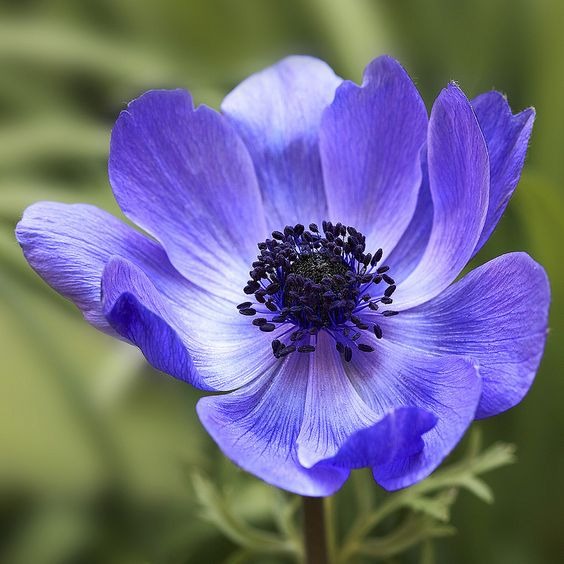
3: African lily (Agapanthus africanus)
The genus Agapanthus encompasses a diverse group of plants consisting of approximately ten distinct species, all characterized by their remarkable clusters of flowers that come in striking shades of blue or white. Among these species, Agapanthus africanus stands out as a particularly noteworthy member, known by several common names such as the lily of the Nile, the African blue lily, or simply the African lily. As its names suggest, this captivating plant produces blooms that possess a lily-like appearance and exhibit a prolonged flowering period spanning most of the summer months. While Agapanthus africanus is classified as a tender perennial, it boasts a commendable level of hardiness, able to withstand challenging conditions and thrive in regions designated as USDA Hardiness Zone 8 and above. This species grows from a fleshy rhizome, which not only provides stability and nourishment but also offers the advantage of being easily dug up and stored during winter in areas with cooler climates, ensuring its protection and vitality for subsequent growing seasons.
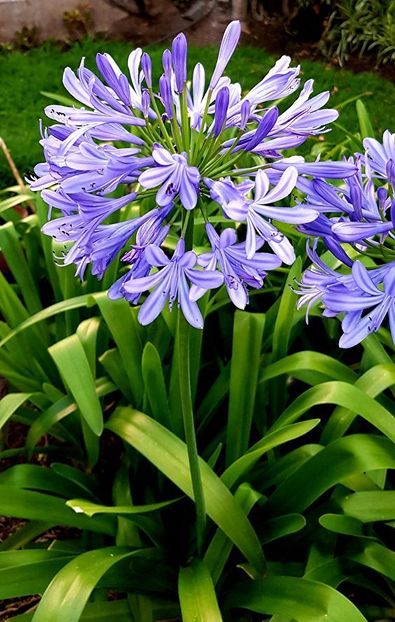
4: Blue Star (Amsonia)
Amsonia offers a diverse selection of species, ensuring that individuals can discover their preferred shade of blue among the various options available. The distinctive feature of this plant is its fluffy clusters of flowers, which consist of numerous small, star-shaped blooms, earning it the popular name of blue star. Notably, these beautiful flowers retain their allure for an extended period, delighting observers for weeks on end. Even the seed pods of the Amsonia plant possess their own allure, adding to its overall attractiveness. Among the notable species, Arkansas blue star, scientifically known as Amsonia hubrichtii, holds a special accolade as the recipient of the prestigious title “2011 Perennial Plant of the Year.” This particular species boasts deep blue flowers and showcases narrow, lance-shaped leaves that undergo a remarkable transformation in the autumn, turning a dazzling shade of gold.
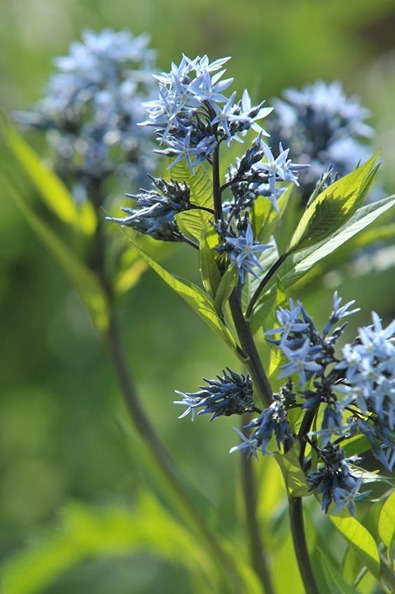
5: Borage (Borago officinalis)
Borago officinalis, a member of the forget-me-not family, is an often overlooked plant despite its numerous merits. Surprisingly, it belongs to the underused category of plants. Borage, as it is commonly known, is an annual herb that thrives effortlessly and readily self-sows, ensuring its continuous presence in the garden. Not only is it a culinary delight, offering a refreshing cucumber-like scent and flavor, but its vibrant blue blossoms also emit a mild cucumber aroma, adding to its appeal. While the plant’s leaves may develop a prickly texture as they mature, it is recommended to allow it to reach its flowering stage, as the lively blue blooms are a sight to behold. Furthermore, borage possesses the remarkable ability to attract pollinators, making it a valuable asset for any garden.
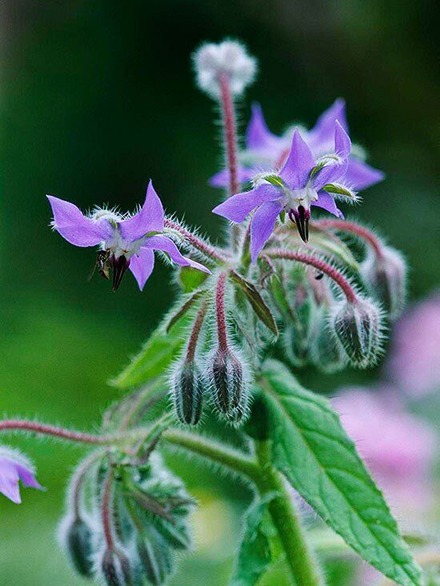
6: False Indigo (Baptisia australis)
It is also one of the blue flowers. When closely examining the foliage and blossoms of Baptisia australis, it becomes apparent that this plant belongs to the pea family. It is indigenous to the eastern parts of North America and is highly esteemed for its capacity to produce vibrant blue dye. Referred to as blue false indigo, it captures attention with its enchanting hues. However, it should be noted that this species can exhibit a slow establishment process, requiring patience from gardeners. Once it takes root, it forms a deep taproot, indicating its preference for a stable and undisturbed environment. Transplantation is generally discouraged as it can disrupt the plant’s growth and overall well-being.

7: Gentians (Gentiana)
The vast array of Gentian species encompasses a multitude of captivating varieties. While not all of them bear the coveted blue hue, the prevalence of blue flowers within the genus is so remarkable that it is impossible to discuss blue blooms without mentioning them. Each species exhibits its own unique characteristics, yet many are found in alpine or woodland habitats, thriving in cooler and moisture-rich conditions. Among these, Gentiana dahurica stands out as a late-season bloomer, known for its sprawling growth habit. Its distinct blossoms feature the familiar five-petal shape with a slightly tubular structure, characteristic of most gentians. In contrast, certain spring-blooming species such as Gentiana alpina and Gentiana angustifolia form compact mats and bear tubular flowers. The diversity within the Gentian genus is truly awe-inspiring.

8: Himalayan Blue Poppy (Meconopsis betonicifolia)
The Himalayan blue poppy (Meconopsis betonicifolia) holds a legendary status in the world of gardening and is often considered a true test for horticultural prowess. Its cultivation can be challenging due to its native habitat in the mountainous regions of southeastern Tibet, where it thrives in the sheltered embrace of shady and moist environments. Replicating the exact climate of Tibet within our own gardens may prove elusive for many, yet numerous gardeners have achieved remarkable success, making it a venture worth undertaking. Given favorable conditions, this extraordinary plant can even spread and establish itself as a perennial, but even a single-season growth is a delightful experience. Seed packets typically provide detailed instructions for sowing, and some gardeners have reported remarkable achievements by winter sowing these seeds. Embarking on the journey of growing the Himalayan blue poppy is a captivating endeavor that promises unique rewards.
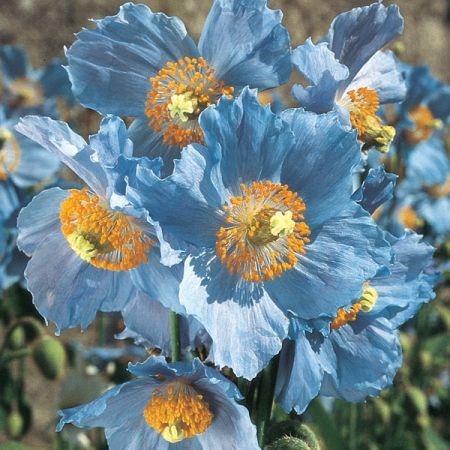
9: Love in a Mist (Nigella damascena)
Love in a Mist (Nigella damascena) earned its evocative name from the delicate, dill-like foliage that envelops its flowers, creating a mist-like effect. This annual flowering plant possesses a remarkable ability to freely scatter its seeds, gracefully finding its place amidst the nooks and crannies of your garden. While Nigella dislikes being transplanted, you can effortlessly propagate it by dispersing its seeds, allowing it to grace various areas of your garden. It is worth noting that these seeds require light for successful germination, so be sure not to cover them. Throughout the season, Love in a Mist will enchant you with its continuous flowering, making it a delightful addition to floral arrangements, and its intriguing seed heads add further allure to its presence.
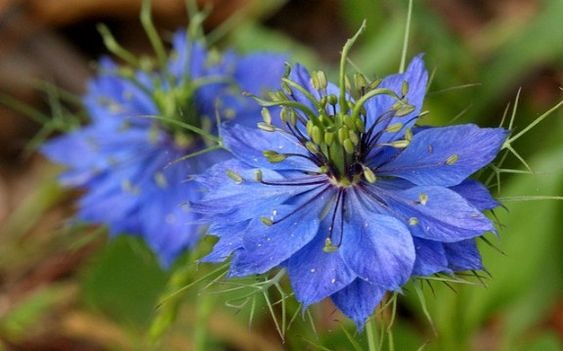
10: Blue Flax
Blue Flax (Linum perenne) is a captivating wildflower that charms with its delicate blue blossoms and slender stems. As a perennial plant, it offers the joy of its vibrant blooms year after year, enhancing the natural beauty of any garden or landscape. Native to Europe, Blue Flax has found its way into the hearts of gardeners worldwide due to its resilience and easy cultivation. The flowers, resembling delicate cups, open in the morning and gracefully close in the afternoon, creating a captivating display of nature’s rhythms. Beyond its visual appeal, Blue Flax also offers a pleasant fragrance, adding an enchanting scent to the surrounding air. This low-maintenance plant thrives in well-drained soil and full sun, making it an excellent choice for rock gardens, borders, or wildflower meadows. Its slender, wiry foliage provides an elegant backdrop for the vibrant blue blooms, creating a harmonious balance in the garden. Additionally, Blue Flax serves as a valuable source of nectar for bees, butterflies, and other pollinators, supporting the ecological balance of the ecosystem. With its enduring beauty and ecological significance, Blue Flax stands as a timeless symbol of nature’s grace and resilience.
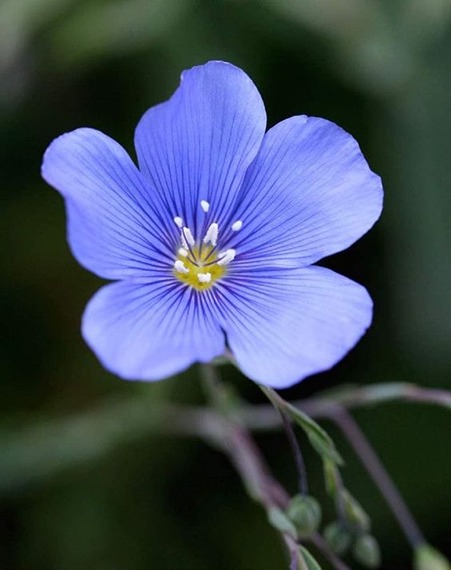
11: Blue Orchid
The Blue Orchid is a captivating and rare flower that enthralls with its striking and elusive blue hues. Known for its enchanting beauty and unique coloration, the Blue Orchid stands out among other orchid species. While blue is a relatively uncommon color in the orchid world, the Blue Orchid manages to captivate with its vibrant and mesmerizing shades. Its petals boast a range of blue tones, from deep indigo to soft azure, creating a stunning visual display that evokes a sense of tranquility and serenity.
This extraordinary flower has an alluring and exotic allure, making it a coveted addition to any floral arrangement or garden. The Blue Orchid’s delicate and intricate blooms are a testament to nature’s artistry, with each petal showcasing intricate patterns and delicate veining. Its graceful and elegant form adds a touch of sophistication to any setting, making it a popular choice for special occasions and events.
The Blue Orchid’s allure goes beyond its visual appeal, as it also carries symbolic meanings of calmness, tranquility, and spiritual harmony. This elusive flower is often associated with feelings of peace, serenity, and inner reflection. The Blue Orchid’s rarity and unique beauty make it a sought-after treasure for collectors and flower enthusiasts alike. Its exquisite blossoms, combined with its elusive nature, create an air of mystery and fascination that captivates the imagination. Whether admired in a bouquet or cultivated in a greenhouse, the Blue Orchid continues to inspire awe and admiration, reminding us of the boundless wonders of the natural world.
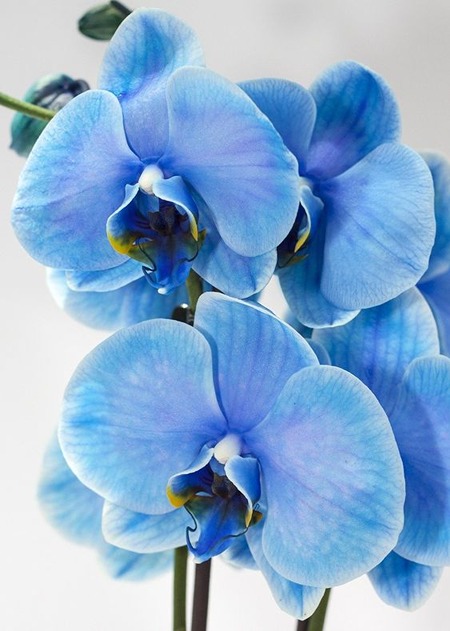
12: Iris
The iris, a captivating flower with an exquisite array of colors and elegant form, is a symbol of grace, beauty, and wisdom. Belonging to the genus Iris, this perennial plant encompasses a diverse range of species and cultivars, each boasting its own unique charm. Known for its distinctive petals, the iris displays a three-petaled arrangement, with three upright petals known as “standards” and three downward-curving petals called “falls.”
The blooms, which can be found in various shades of blue, purple, white, yellow, and even multicolored combinations, evoke a sense of enchantment and allure. With their intricate patterns and delicate veining, iris flowers possess an unmatched complexity that draws the gaze and captivates the imagination.
Renowned for its vibrant hues and captivating scent, the iris has been a favorite subject for artists throughout history, inspiring painters, poets, and craftsmen to capture its ethereal beauty.
Beyond its visual appeal, the iris also exudes a captivating fragrance, adding another layer of sensory delight to its presence in gardens and bouquets. This fragrant essence has made it a popular choice in perfumery, where iris is prized for its elegant and sophisticated notes.

13: Morning Glory
The morning glory, a delightful and enchanting flower, is a symbol of new beginnings and the fleeting beauty of each day. With its vibrant colors and trumpet-shaped blooms, this annual climbing vine brings a sense of joy and wonder to gardens and landscapes. As its name suggests, the morning glory unfurls its blooms in the early morning, showcasing an array of shades including deep blues, purples, pinks, and whites, captivating the eye and uplifting the spirit.
Belonging to the family Convolvulaceae, the morning glory encompasses numerous species, each with its own unique charm. The most common variety, Ipomoea purpurea, displays heart-shaped leaves and large, showy flowers that can reach up to four inches in diameter. These blossoms, which last for just one day, serve as a reminder to embrace the beauty and opportunities that each new day brings.
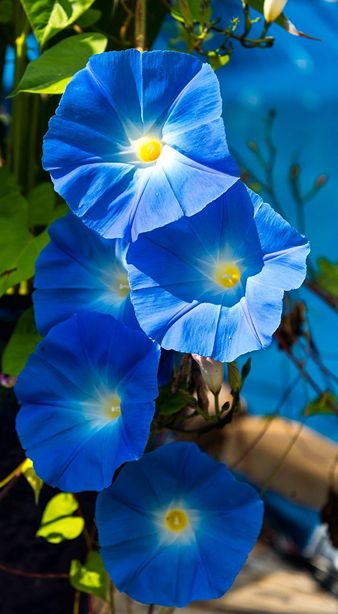
14: Glory-of-the-Snow
Glory-of-the-Snow, scientifically known as Chionodoxa, is a charming and delicate flower that heralds the arrival of spring with its vibrant and enchanting display. Native to the alpine regions of Turkey and the Caucasus, this petite flower bursts forth with a profusion of star-shaped blooms that blanket the ground in a carpet of breathtaking colors.
The name “Glory-of-the-Snow” aptly describes its ability to emerge and bloom even while patches of snow still linger. These resilient flowers showcase a range of captivating hues, including shades of blue, pink, and white, which add a burst of color to the awakening landscape. The dainty blossoms of Glory-of-the-Snow feature six petals with contrasting centers, creating a striking visual contrast. As the sunlight bathes the petals, they seem to shimmer and glisten, radiating a sense of joy and vitality.
This early spring bloomer is a welcome sight after the long winter months, signaling the promise of warmer days and rejuvenation in nature. The beauty of Glory-of-the-Snow lies not only in its vibrant flowers but also in its graceful foliage. The slender, grass-like leaves provide an elegant backdrop to the blooms, enhancing their delicate charm. These resilient plants thrive in well-drained soil and are often found in rock gardens, borders, or naturalized in meadows.
Beyond their aesthetic appeal, Glory-of-the-Snow holds symbolic significance, representing hope, resilience, and the beauty of new beginnings. It serves as a gentle reminder that even in the harshest conditions, nature finds a way to bloom and flourish. The ephemeral nature of Glory-of-the-Snow’s blooms adds to its allure, as the flowers fade gracefully, leaving behind a fleeting memory of their radiant beauty. A true delight for gardeners and nature enthusiasts alike, Glory-of-the-Snow enchants with its ephemeral charm, making it a cherished symbol of spring’s arrival and the enduring beauty of nature’s cycles.
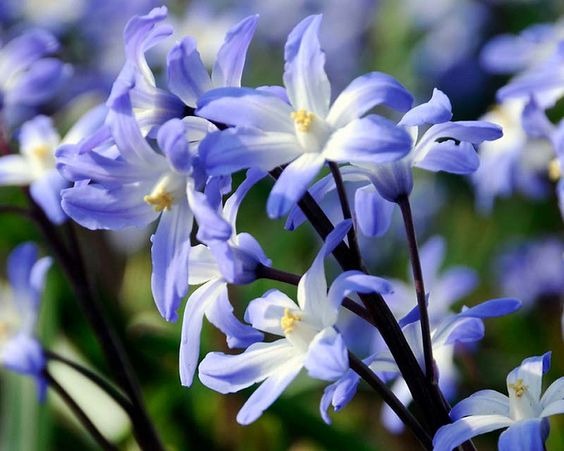
15: Blue Mist Shrub (Caryopteris x clandonensis)
In late summer, the blue mist shrub (Caryopteris x clandonensis) reveals its captivating ability to create a beautiful haze of blue in the garden. Its blooming stage attracts a swarm of buzzing bees, drawn to the nectar-rich flowers that adorn the shrub. As a sub-shrub, the blue mist shrub exhibits woody stems, adding to its overall structure and resilience.
To ensure abundant blooms, it is advisable to trim the plant close to the ground during early spring since it flowers on new wood. Beyond this simple pruning task, the blue mist shrub requires minimal maintenance, making it a hassle-free addition to any garden. Enthusiasts can explore various cultivars, each boasting unique shades of blue. For a deep and intense hue, ‘Grand Bleu’ is a splendid choice, while ‘Longwood Blue’ offers a delightful pale blue shade. Those seeking a touch of vibrancy can opt for ‘Sunshine Blue,’ featuring lavender-blue flowers that contrast beautifully against its bright gold foliage.
